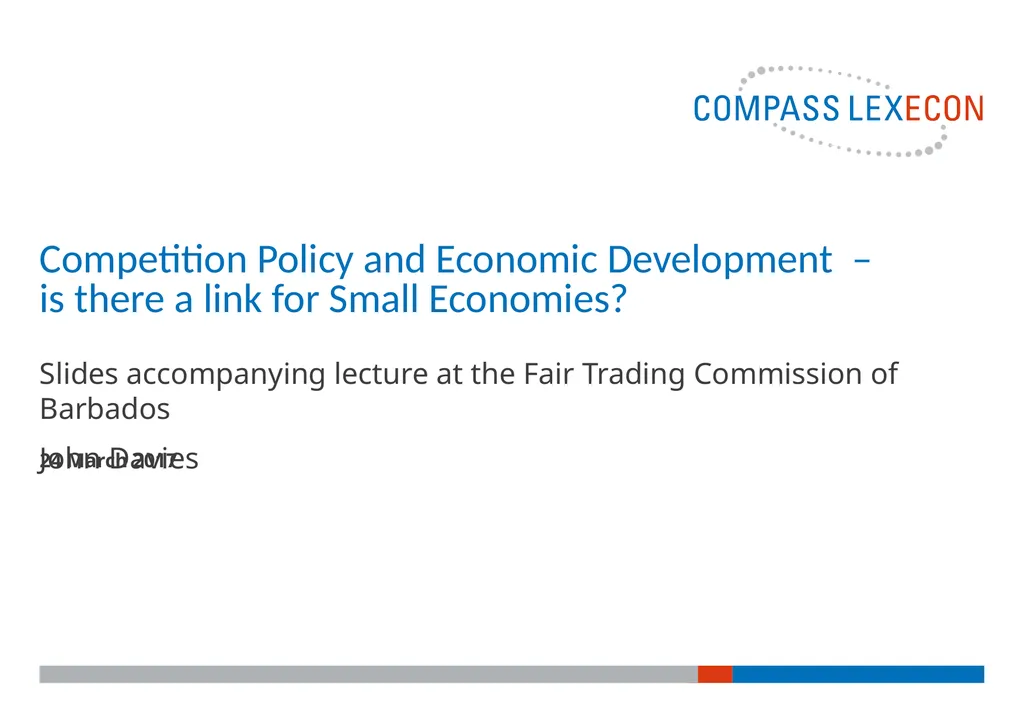Competition Policy and Economic Development – is
Author : cheryl-pisano | Published Date : 2025-05-24
Description: Competition Policy and Economic Development is there a link for Small Economies Slides accompanying lecture at the Fair Trading Commission of Barbados John Davies Immediate economic benefits of actions by competition authorities
Presentation Embed Code
Download Presentation
Download
Presentation The PPT/PDF document
"Competition Policy and Economic Development – is" is the property of its rightful owner.
Permission is granted to download and print the materials on this website for personal, non-commercial use only,
and to display it on your personal computer provided you do not modify the materials and that you retain all
copyright notices contained in the materials. By downloading content from our website, you accept the terms of
this agreement.
Transcript:Competition Policy and Economic Development – is:
Competition Policy and Economic Development – is there a link for Small Economies? Slides accompanying lecture at the Fair Trading Commission of Barbados John Davies Immediate economic benefits of actions by competition authorities Deterrent effects of existence of competition authority Longer term economic benefits: productivity growth Broader economic benefits: the social dimension Some (additional) small country considerations (time permitting) – the international dimension. What outlook for competitive markets in the world of Trump and Brexit? competition policy and small country development 1 & 2 – immediate effects and deterrence Direct benefits of competition enforcement the scale of the problem Collusive cartels are the most obvious and direct cost of anti-competitive behaviour – there are some very precise numbers but only for the cartels we have discovered: On average 1990 – 2013, discovered international cartels affected US$750bn commerce per year, overcharge 40% (Connor, 2014) In 1997 developing countries imported US$54.7bn of goods from industries containing a price fixing conspiracy, representing 5.2% of total imports (Levenstein, Suslow and Oswald 2003) A dataset of 249 ‘hard-core’ discovered cartels within developing countries affected sales relating to about 4% of GDP. As well as higher prices, the cartels reduced production by about 15% in each affected market (Ivaldi, Khimich and Jenny 2014) How many cartels were not discovered? No one really knows, but economists estimate between 15 – 25% or so. So the true cost will be about 4 – 6 X higher. Direct benefits to consumers Competition agency measures of ‘impact’ Some authorities attempt to estimate overall ‘impact assessments’ of their interventions EU DG Competition equivalent exercise found EUR7 - 10 billion just for enforcement . More competition authorities are doing this, eg Lithuania estimates 9:1 ratio, Hungary 4:1. OECD has produced a template. However, these measures are very simplistic and undoubtedly underestimate the benefit: deterrence, broader competition policy, productivity…? UK CMA 2012 – 2015 average annual savings to consumers: Total £744m = US$923m, about 11 x annual cost of the agency Deterring anti-competitive behaviour: The vitamins cartel International cartel (producers in OECD countries) 1989 – 1998, total overcharges about US$5bn in today’s prices Evenett and Clarke (2002) estimated overcharges in 92 countries, 23 of them in LAC Overcharges systematically higher in countries without effective competition law and institutions to enforce it. Barbados not included, but taking the average of Costa Rica, Dominican Republic and Trinidad & Tobago, overcharge in Barbados would have been














